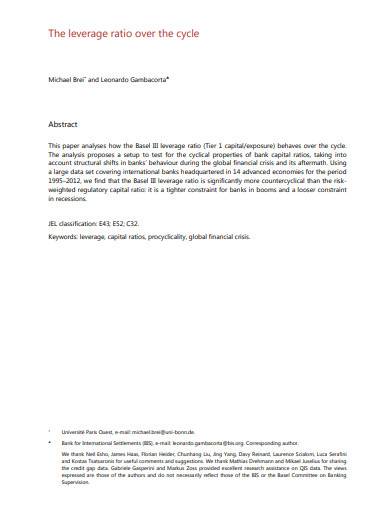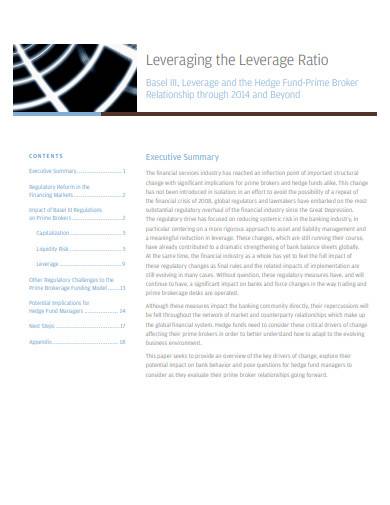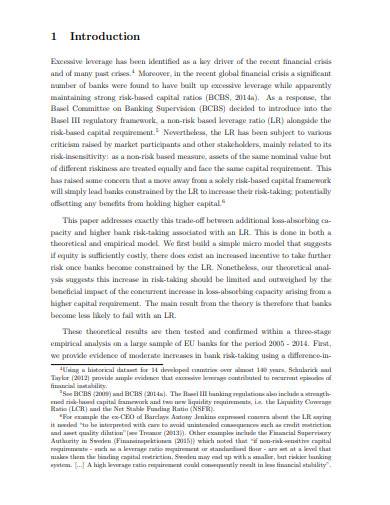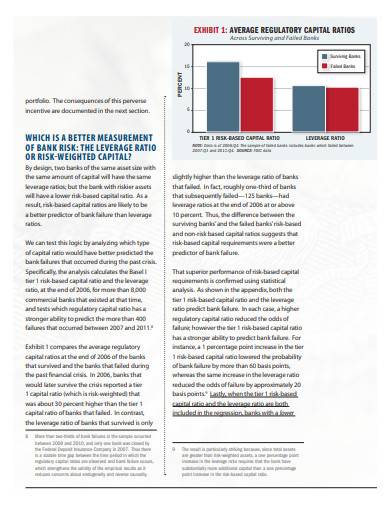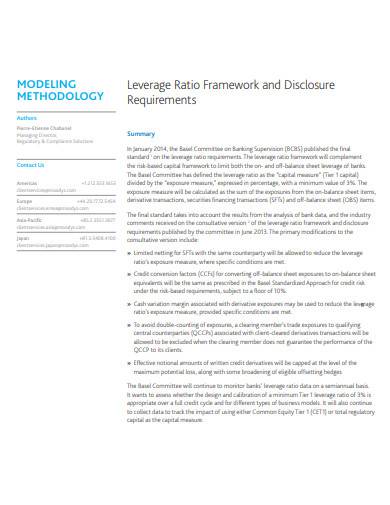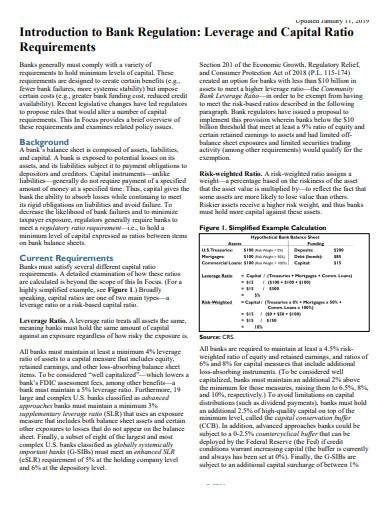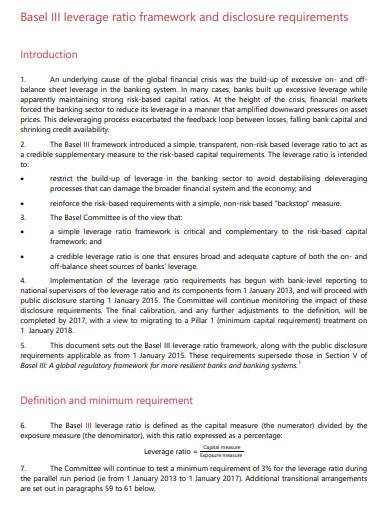Financial analysis is one of the important parts of business management where they can use a variety of financial ratios. They aim to achieve their respective purposes while providing businesses insights into various financial aspects of a company. To keep a business running, owners use loans or equities to fund their operations and ensure its continuity. Loans are borrowed money that must be repaid after a certain period of time with interest while equity is the ownership of the company itself. This ratio determines the company’s level of debt against its other accounts in its balance sheet, income statement, or cash flow statement.
FREE 6+ Leverage Ratio Samples & Templates in PDF
1. Leverage Ratio Over the Cycle
2. Leveraging the Leverage Ratio
3. Leaverage Stability Ratio Template
4. Reseach Note Leaverage Ratio Template
5. Leverage Ratio Framework Template
6. Leverage and Capital Ratio Template
7. Leverage Ratio Framework Sample
What is a Leverage Ratio?
Leverage ratios are a type of financial measurement that determines how much company capital comes from loans or evaluates the company’s ability to perform and meet its financial obligations. Companies depend on equities and loans to ensure the continued operation of their business and leverage rations are a useful process to evaluate whether they can pay off their debts when they are due and determine if they are borrowing too much money which can negatively impact their financial management plans as well as budget plans.
How to Calculate Leverage Ratio
Leverage ratios can be analyzed depending on what an individual is looking for. Investors and financial institutions use leverage ratios to determine if the company is worth investing in or not while businesses utilize this to determine whether a company is worth collaborating with or not. With this process, investors and other decision-makers are provided with a clear overview of the company’s ability to fulfill its financial liabilities and obligations.
Step 1: Determine the Total Debt
You can determine the company’s total debt by assessing its records and understanding its transactions such as its expenses and debts. The total debts commonly include short and long-term debts. You can use a debt schedule to determine your company’s debts and easily calculate its total.
Step 2: Determine the Total Assets
To determine and calculate your total assets, you can refer to your financial statements and financial reports or records. Assess these documents to determine the value of your company’s tangible assets such as merchandise, cash, and machinery.
Step 3: Analyze Your Balance Sheet
If you want to calculate your debt-to-equity ratio, you first need to analyze your balance sheet which contains the summary of your financial information. Then calculate the shareholder’s equity by deducting the total liabilities value from the total assets’ value.
Step 4: Apply the Formula for the Ratio
Apply the appropriate formula to calculate the debt-to-asset ratio and debt-to-equity ratio. Make sure to input accurate and necessary information into the formula to ensure the accuracy of the result.
FAQs
What are the different types of debt ratios?
The different types of ratios that companies commonly use according to their capital structure are the debt-to-asset ratio, debt-to-equity ratio, debt-to-capital ratio, debt-to-EBITDA ration, and asset-to-equity ratio.
What are the categories of leverage ratios?
The leverage ratio has three categories which are operating leverage which compares a company’s fixed costs to its variable costs, financial leverage which compares the company’s debt is utilizing to its finance business operations, and combined leverage which is the combination of the operating and financial leverage ratios.
How are leverages created?
Companies create leverages using a number of methods including direct asset purchases, asset-backed lending, cash flow loan, and mergers and acquisitions loans.
What is a coverage ratio?
A coverage ratio is used to measure the ability of a company to pay its financial liabilities. Its common types include interest coverage ratio, debt service coverage ratio, cash coverage ratio, and asset coverage ratio.
A leverage ratio is a calculation process that enables companies to determine the relative level of debt they have incurred. It compares their total debt obligation to either their business’s assets or equity. This ratio also helps in determining whether a company is at risk of entering bankruptcy protection. Businesses are able to increase their leverage in various ways but the most common approach is taking on more debt by using a line of credit which also increases their financial obligations. Other documents that businesses can use for their loans include loan payment schedules, loan repayment agreements, loan payment contracts, debt trackers, debt management plans, and more.
Related Posts
FREE 10+ Double Entry Journal Samples and Templates in MS Word | PDF
FREE 5+ Stock Ledger Samples and Templates in MS Excel | PDF
FREE 10 + Revenue Recognition Samples & Templates in PDF | MS Word
FREE 11+ Liability Insurance Application Samples and Templates in MS Word | PDF
FREE 11+ Petty Cash Reconciliation Samples and Templates in MS Excel | PDF
FREE 10+ Reconciliation Statement Form Samples and Templates in MS Word | PDF | MS Excel
FREE 10+ Annuity Disclosure Form Samples & Templates in PDF
FREE 9+ Absorption Costing Samples & Templates in PDF | MS Word
FREE 10+ Prepaid Expenses Samples and Templates in PDF | MS Excel
FREE 7+ Depreciation Worksheet Samples & Templates in PDF | MS Word
FREE 10+ Turnover Ratio Analysis Samples and Templates in PDF
FREE 11+ Cost Volume Profit Analysis Samples & Templates in PDF | MS Word
FREE 10+ Bank Reconciliation Statement Samples and Templates in PDF | MS Word
FREE 9+ Balance Sheet Reconciliation Samples & Templates in PDF | MS Word
FREE 7+ Annuity Review Checklist Samples and Templates in MS Word | PDF
